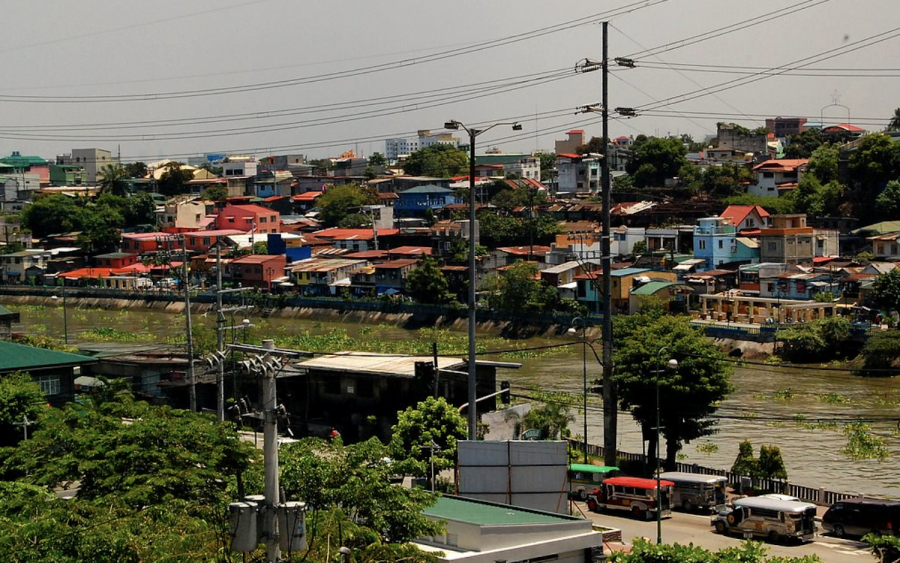Pasig River / dreams & pancakes / Flickr / CC BY 2.0
Densely populated houses sit at the edge of the Pasig River, which flows through the Philippines.
Flowing pollution in the Philippines
A plastic water bottle flows down the Pasig river, bending and curving through lush forests and highly urbanized areas. It travels under bridges and ventures through verdant canopies that shade the river on a sunny day in the Philippines. Whether or not the bottle will eventually flow into the ocean or get stuck along the way is unknown. However, one can whittle down the possibilities of its origin.
The bottle may have come from one of the 164 sanitary landfills or 404 illegal open dumps in the Philippines. These landfills pile up with plastics partly because the recycling system of the Philippines is decentralized, meaning it is up to the local government to determine how to manage recyclable material. This process leaves individuals responsible for separating their waste – a chore for which there is little compliance because the dump trucks often mix the trash after collection.
“This affects how people perceive the waste management process because they think it doesn’t make sense for them to segregate,” said Marian Ledesma, the Zero Waste campaigner at Greenpeace Philippines.
While most collected waste ends up in landfills, a considerable amount reaches essential water sources.
According to a study by the World Wide Fund for Nature, 74% of plastic leakage from Filipino sources comes from already collected waste.
You can’t blame local consumers if there really is no infrastructure to dispose of the waste properly or it hasn’t been implemented yet by the local government.
— Marian Ledesma
Another way plastic waste can pollute bodies of water such as the Pasig River is through poor environmental conditions.
“The infrastructure of the landfills and recycling centers is not great. With bad weather, plastic usually gets carried to waterways or water sources through runoff,” Ledesma said.
Once the plastic reaches the river, its effects endanger certain aspects of life in the area. In the 1950s, people would swim in the river. But today, one wouldn’t think of immersing themself in such polluted water; scientists declared the Pasig biologically dead in the 1990s.
“You can no longer fish in the river,” Ledesma said. “They also used to have livestock along the banks, but they can no longer do so because the river is so polluted.”
The pollution of the Pasig River threatens human health, along with rendering recreation, fishing, and raising animals too dangerous.
“If you have an open cut, or you wade in these polluted waters, you can get seriously sick,” Ledesma said. “Some of these communities also get their food from the bay that the Pasig River connects to, and their food system is impacted because they sometimes get contaminated water.”
While environmental organizations from Manila and neighboring cities have been working to limit this pollution, river clean-ups and charities can only do so much.
“You can’t blame local consumers if there really is no infrastructure to dispose of the waste properly or it hasn’t been implemented yet by the local government,” Ledesma said. “These people do want to lessen plastic waste. They simply don’t have any resources provided.

